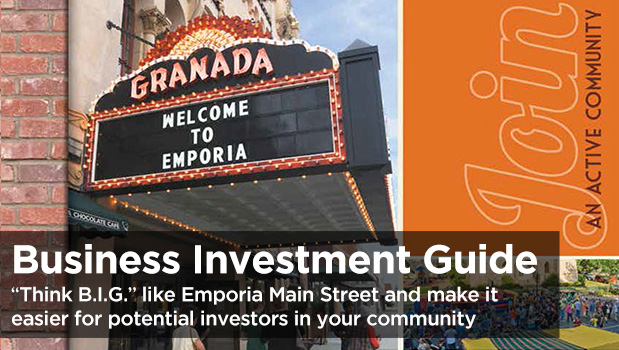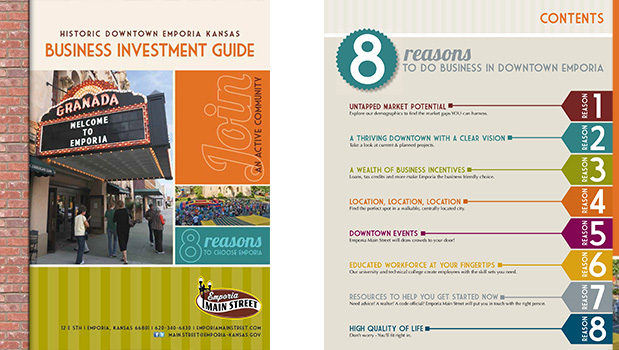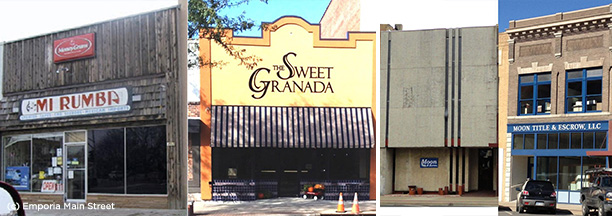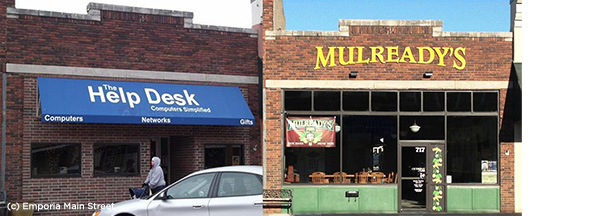Community Spotlight: Building Shared Momentum in Charlotte’s Commercial Corridors
See how Charlotte small business owners are breaking barriers in our B3 initiative spotlight which recaps the work underway and the impact already taking shape.

Marion, Iowa © Tasha Sams
We work in collaboration with thousands of local partners and grassroots leaders across the nation who share our commitment to advancing shared prosperity, creating resilient economies, and improving quality of life.

Emporia, Kansas © Emporia Main Street
Made up of small towns, mid-sized communities, and urban commercial districts, the thousands of organizations, individuals, volunteers, and local leaders that make up Main Street America™ represent the broad diversity that makes this country so unique.

Chicago, Illinois © Main Street America
Looking for strategies and tools to support you in your work? Delve into the Main Street Resource Center and explore a wide range of resources including our extensive Knowledge Hub, professional development opportunities, field service offerings, advocacy support, and more!

Waterloo, Iowa © Main Street Waterloo
Your one-stop-shop for all the latest stories, news, events, and opportunities – including grants and funding programs – across Main Street.

Kendall Whittier — Tulsa, Oklahoma © Kendall Whittier Main Street
Join us in our work to advance shared prosperity, create strong economies, and improve quality of life in downtowns and neighborhood commercial districts.

The first rule of conducting business is “make it simple.” The easier it is to pay for merchandise, get entertainment or obtain a service, the more likely it is that people will take advantage of those options. Knowing that, why do we make investing in our community cores so difficult and time consuming? For developers and small businesses, it sometimes feels like we are intentionally trying to make them run a gauntlet of meetings, information searches and endless quests for financing, just to see if they have the perseverance to make it through. It doesn’t have to be this way. When we talk about incentives, saving people time and energy makes investing easy–and gives a community a huge competitive advantage. One simple way your Main Street organization can make things easier for potential investors is with the creation of a Business Investment Guide.
Emporia Main Street worked with local design firm IM Design Group and local development and consulting group Placemakers, LLC to form an eight section guide that is available digitally, and can be customized for individual recruitment efforts. The guide’s eight sections—called “reasons”—were intensely researched, and represent the eight categories of information most requested by developers and entrepreneurs that look at communities: 1) market analysis; 2) list of completed and planned projects; 3) available monetary and non-monetary incentives; 4) detailed downtown map; 5) annual events calendar; 6) qualified workforce availability; 7) local assistance points; and 8) elements that contribute to a high quality of life.
Developers and businesses need information about your community’s market, market gaps, and population and income levels in a detailed market analysis. They also need to see that other successful projects have taken place recently in your community that indicate momentum with a list of completed and planned projects. Monetary and non-monetary incentives should be clearly listed if they apply to your community core. Information about the core location, including traffic counts and sub-districts that make business or development placement easier are essential and should be included with a detailed map. Events, activities and anchors that impact traffic and produce potential residents, workers and customers should be listed. Qualified workforce is often a limiting factor for some businesses and development projects, so denoting your workforce numbers and sources can be critical. Local assistance points that can aid in forming a team for business start ups or development resources for a property developer can save a lot of time. And, we must always remember that all businesses and developments are dependent on people, so components of your community that lend to a high quality of life should be highlighted. When all the aforementioned information is presented in an attractive format, it gives both potential businesses and developers a more substantial snapshot of your community.

View Emporia Main Street's complete Business Investment Guide here.
Many Main Street Directors are probably looking at the previous paragraph saying “how in the heck am I going to pull all of that together?” Well, the wonderful thing about the information contained in a Business Investment Guide is that it closely aligns with the Main Street Four Point Approach. Market information, incentives and workforce are functions of the Economic Vitality Committee. Location information, sub-districts and some resources are a function of Design. Events, activities and some quality of life issues are covered in the Promotions point. The vision of the core, recent wins and the public relations aspect of a Business Investment Guide are the responsibilities of the Organization Committee. Creating an effective Business Investment Guide is a great way to bring all of your committee points together to work on a common project.
In the Main Street world, we do a lot of “R and D”. No, not “research and development.” Think “rip-off and duplicate.” For your Business Investment Guide, you don’t have to reinvent the wheel. Reasonably priced templates exist for developing the aesthetics of the guide (CLICK HERE) and professional services are available for those of you that get stuck in the data collection or text creation areas (CLICK HERE). As a residual impact of this process, you will undoubtedly create committee members, volunteers and general citizens in your community who are very knowledgeable about your market so they can be more effective advocates.
So, when you are putting together this year’s work plans and you undoubtedly notice the need for more crossover activities between your committees, we encourage you to “Think B. I. G.” and include a Business Investment Guide in your planning process. For our rural community of Emporia, Kansas, the Business Investment Guide we developed, when coupled with our Community Initiated Development Plan, has been a major tool in helping us create over $40 million in economic development in our downtown over the past six years. This includes three new mixed use developments and a host of historic rehabilitation projects. If we can pull off those types of reinvestment numbers in a small rural Kansas town with these planning and marketing efforts, just think, what could your community do?

Successful redevelopment projects in Emporia.

Casey Woods is the Executive Director of Emporia Main Street in Emporia, Kansas, where he routinely discusses techniques to improve businesses, organizations and communities through organization, design, promotion and other business enhancement activities. He also serves as a partner in PlaceMakers, LLC, a consulting firm working nationwide with both large and small communities, and their businesses, to promote sustainable economic growth through community and economic development practices.